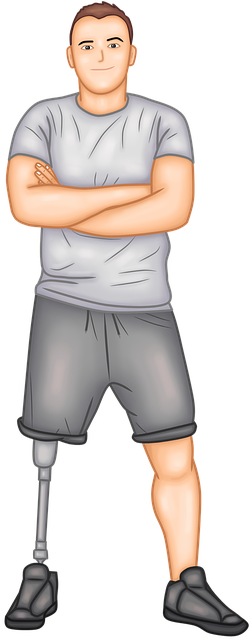Medical amputation, the surgical removal of a limb or a part of a limb, is a procedure that has been performed for centuries to address various medical conditions. While often associated with trauma or serious diseases, amputation can be a life-changing intervention that enhances overall health and quality of life. In this article, we will explore the circumstances under which medical amputation may be considered, the procedure itself, and the physical and emotional aspects of recovery.
Indications for Medical Amputation:
Medical amputations are typically considered when other treatment options have proven ineffective, and the affected limb poses a threat to the patient's health or quality of life.
Common reasons for amputation include:
- Peripheral Artery Disease (PAD):
Reduced blood flow to the extremities, often due to PAD, can lead to severe pain, non-healing wounds, and infection, making amputation a viable option for improving overall health. This can be caused by long standing diabetes, high cholesterol or vasculitis. - Severe Trauma:
Irreparable damage to a limb due to accidents, crushing injuries, or severe burns may necessitate amputation. - Cancerous Tumors:
In cases where tumors affect bones or soft tissues, amputation may be recommended to prevent the spread of cancer to other parts of the body. - Intractable Infections:
Chronic infections that do not respond to antibiotics or other treatments may require amputation to prevent the spread of infection and save the patient's life.
The Amputation Procedure:
The amputation procedure involves the careful removal of the affected limb or part of the limb. Surgical techniques have advanced significantly, aiming to preserve as much healthy tissue as possible while achieving the medical goals of the procedure. Surgeons consider factors such as the level of amputation, the patient's overall health, and the expected functional outcomes during the planning process.
Recovery and Rehabilitation:
Recovery from an amputation is a comprehensive process that involves both physical and emotional aspects. Rehabilitation is a critical component and typically includes:
- Physical Therapy:
Physical therapy helps patients adapt to their changed physical condition, regain strength, and learn to use prosthetic devices if applicable. - Occupational Therapy:
Occupational therapists assist individuals in relearning daily activities and adapting to new ways of accomplishing tasks. - Psychological Support:
Coping with the emotional impact of amputation is crucial. Mental health professionals can provide support and resources to help individuals navigate the psychological challenges associated with the loss of a limb.
Prosthetics and Assistive Devices:
For many individuals who undergo amputation, prosthetic limbs or assistive devices play a vital role in restoring functionality. Advances in prosthetic technology continue to provide individuals with more natural and functional options, enabling them to lead fulfilling lives.
Conclusion:
Medical amputation is a complex and often challenging decision that requires careful consideration from both the medical team and the patient. While it represents a significant physical and emotional adjustment, advances in surgical techniques, rehabilitation, and prosthetic technology continue to improve outcomes and enhance the lives of those who undergo this procedure. Open communication, thorough education, and ongoing support are crucial elements in the journey of those facing or recovering from medical amputation.
